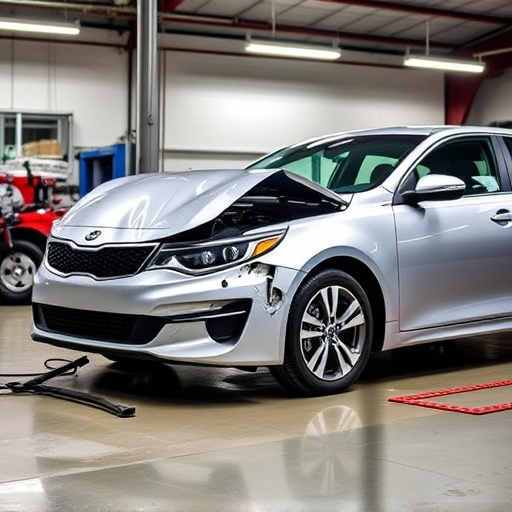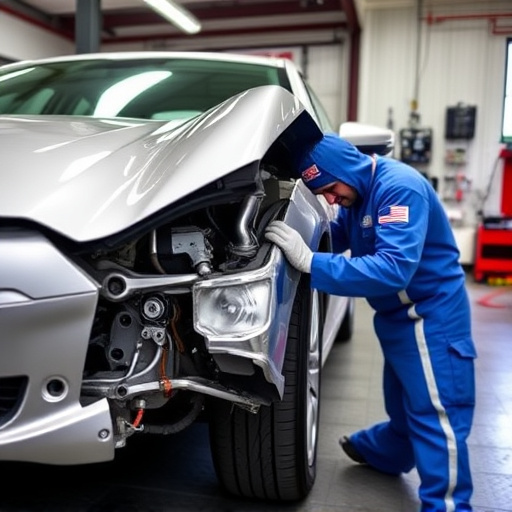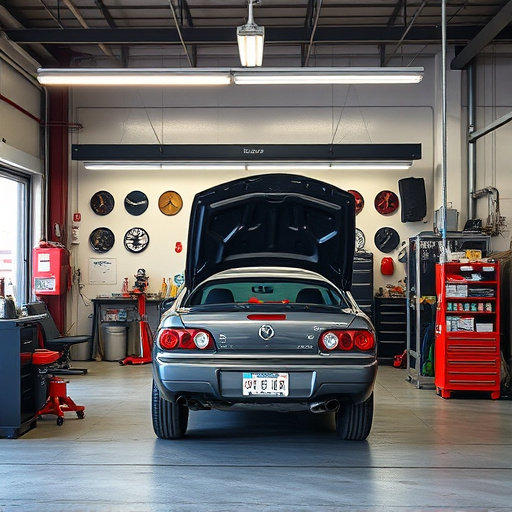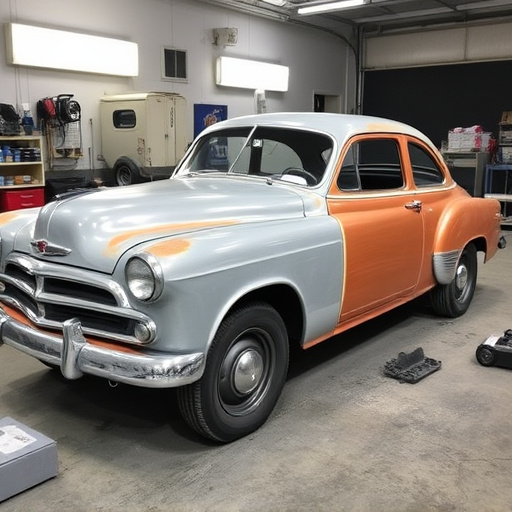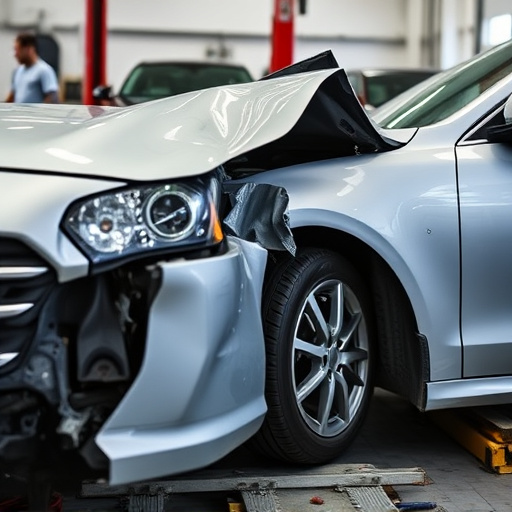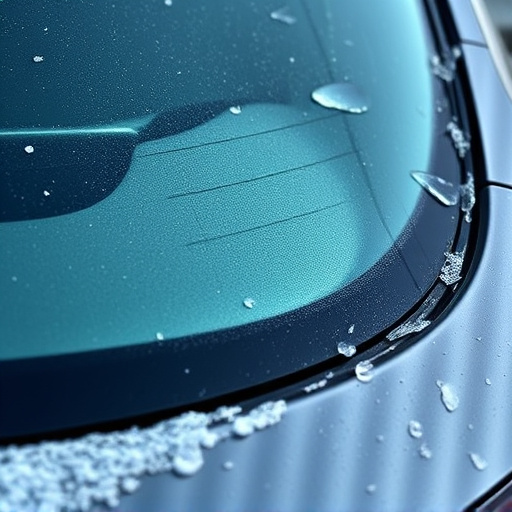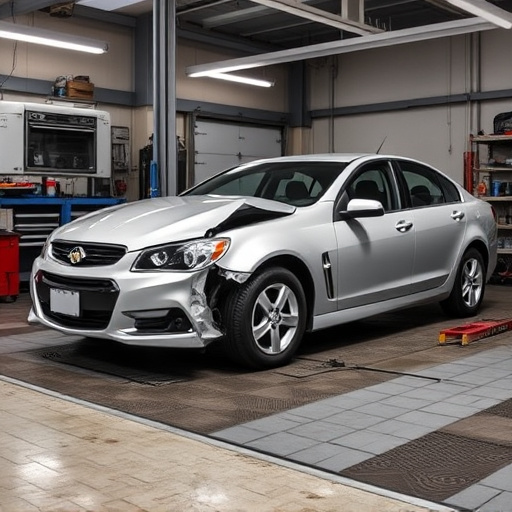Advanced diagnostics are revolutionizing steering repair after accidents, especially in modern vehicles with complex electronic systems. Tools like computer-aided scanning and sensors detect subtle issues missed by traditional methods, enabling precise identification of damaged components. This data-driven approach ensures safer, more reliable repairs, maintaining auto body shops' reputations for excellence. Integrating these diagnostics with other services ensures every vehicle component is restored optimally, enhancing safety and driver confidence. Future steering repair uses smart materials, AI, robotic welding, and 3D printing for efficient, environmentally friendly, and faster repairs.
Advanced diagnostics play a pivotal role in steering repair after accidents, revolutionizing post-crash vehicle maintenance. With sophisticated sensors and scanning tools, mechanics can now uncover intricate vehicle data, enabling precise repairs. This article delves into the transformative impact of advanced diagnostics on steering repair, showcasing how they facilitate comprehensive assessments and tailored solutions. By exploring future trends, we highlight the ongoing evolution of safety and efficiency in post-accident steering systems.
- Understanding Advanced Diagnostics: Unlocking Accurate Accident-Related Repairs
- The Impact on Steering Repair: A Comprehensive Approach
- Future Trends: Enhancing Safety and Efficiency in Post-Accident Steering Systems
Understanding Advanced Diagnostics: Unlocking Accurate Accident-Related Repairs
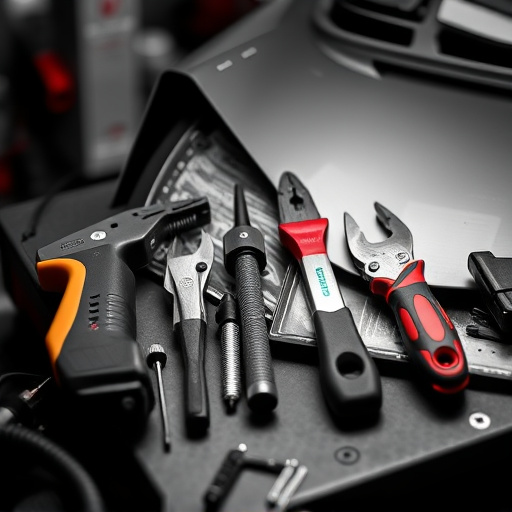
Advanced diagnostics play a pivotal role in ensuring accurate and efficient steering repair after an accident. With modern vehicles equipped with complex electronic systems, understanding and leveraging these diagnostic tools is essential for auto body shops aiming to provide top-notch service. By employing sophisticated technology, such as computer-aided scanning and advanced sensors, technicians can uncover subtle issues that may have gone unnoticed through traditional methods. This deep level of insight enables precise identification of damaged components, be it the steering rack, tie rods, or other critical parts, facilitating targeted repairs.
This modern approach to auto body restoration, especially in cases involving frame straightening, goes beyond mere visual inspections. Advanced diagnostics provide data-driven insights, ensuring that every repair is tailored to the specific accident scenario. As a result, customers benefit from safer and more reliable vehicles, while auto body shops maintain their reputation for excellence through efficient and effective steering repair services.
The Impact on Steering Repair: A Comprehensive Approach
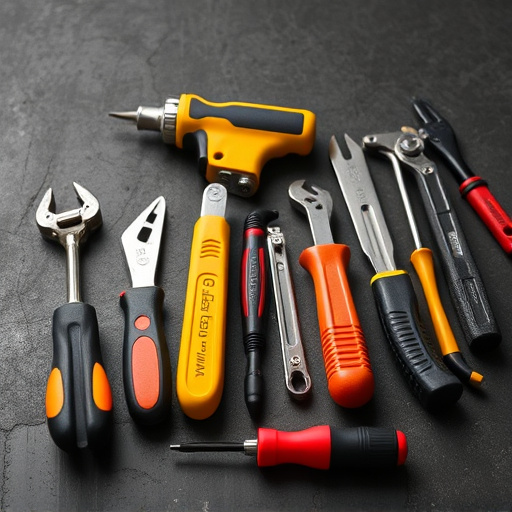
The advancement of diagnostic technology has brought about a transformative change in how steering repairs are handled after an accident. With modern equipment and sophisticated software, mechanics can now perform comprehensive assessments, accurately identifying issues that might have gone unnoticed with conventional methods. This shift enables a more precise and tailored approach to steering repair, ensuring vehicle safety and performance.
In the aftermath of a collision, advanced diagnostics facilitate a multi-faceted evaluation, extending beyond the visible damage. It involves scanning for sensor malfunctions, analyzing alignment issues, and detecting subtle abnormalities in the steering system. This holistic view allows for a more effective car body repair strategy, encompassing not just the immediate visual fixes but also addressing potential long-term stability and handling concerns. Moreover, integrating these diagnostics with other essential auto services, such as auto glass repair and vehicle dent repair, ensures that every aspect of the vehicle is restored to optimal condition, enhancing safety and driver confidence on the road.
Future Trends: Enhancing Safety and Efficiency in Post-Accident Steering Systems

As technology advances, the future of steering repair after accidents is set to become more efficient and safer for all road users. One key trend is the increased adoption of advanced diagnostic tools that can accurately assess vehicle damage in minutes, reducing time spent on manual inspections. These systems use a combination of sensors, computer algorithms, and artificial intelligence to detect even subtle changes in the vehicle’s structure, ensuring no damage goes unnoticed. This enhances accuracy and allows for more precise repairs, minimizing costly misdiagnoses.
Additionally, the integration of smart materials and lightweight components into vehicle bodywork will play a significant role in post-accident restoration. Auto body shops can now employ advanced repair methods, such as robotic welding and 3D printing, to restore vehicle bodies to near-original condition, preserving their structural integrity and aesthetic appeal. These innovations streamline the repair process, reduce waste, and speed up turnaround times, ultimately making steering repair after accidents more efficient and environmentally friendly.
Advanced diagnostics play a pivotal role in enhancing the accuracy and efficiency of steering repair after accidents. By leveraging cutting-edge technology, mechanics can now navigate complex post-collision scenarios with greater precision, ensuring safer and more reliable vehicle performance. This evolution in diagnostic tools not only streamlines the repair process but also contributes to improved overall safety on the roads. As we look ahead, future trends in advanced diagnostics aim to further optimize steering systems, making them not just reparable but also smarter and more resilient following accidents.
